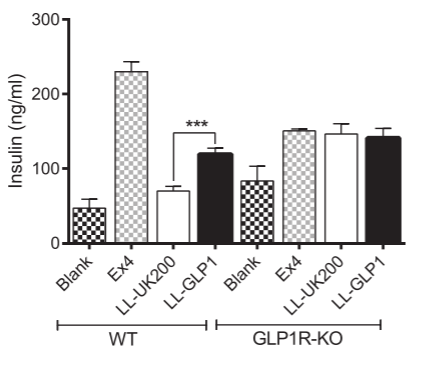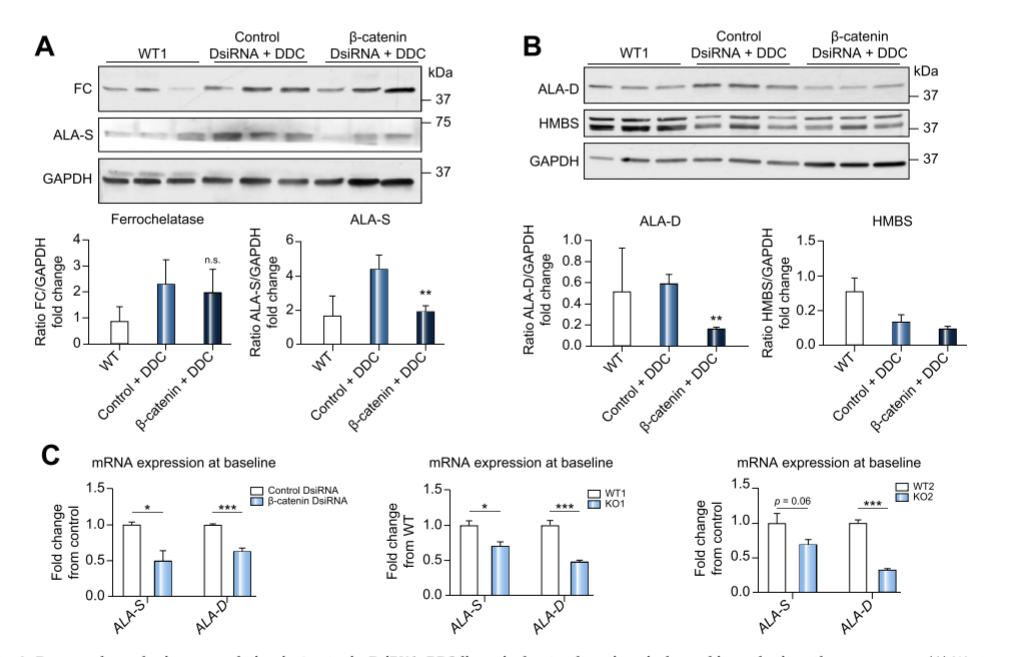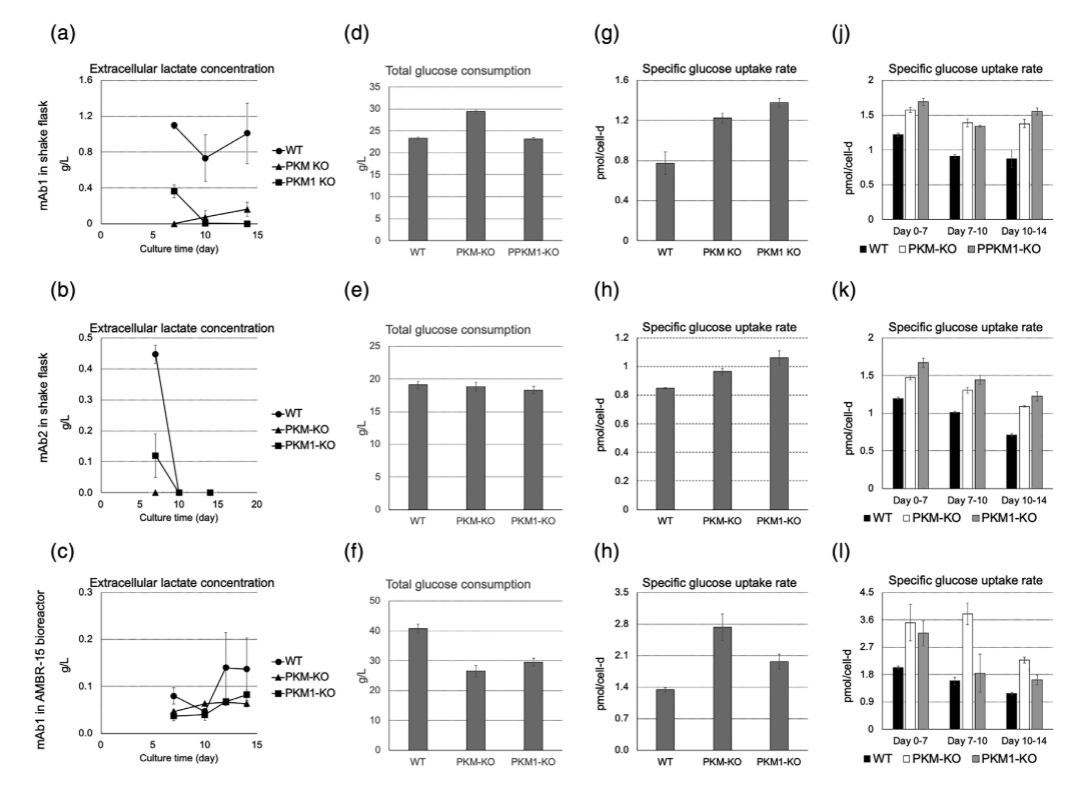Gene knockout cells

Gene knockout is one of the most effective strategies to study the function of a gene. The biological function of the gene is studied by comparing the changes in phenotype, function and structure of the cells after knockout. EDITGENE recommends the three best-selling KO cell lines of December , and introduces the relevant research litterateurs , hoping to inspire your research.
The enteroendocrine hormone glucagon-like peptide 1 (GLP-1) is an antidiabetic compound that reduces glucagon secretion in pancreatic α-cells, promotes insulin secretion in pancreatic β-cells, reduces appetite, slows gastric emptying, and in the cardiovascular system, increases heart rate and cardiac output.The protein encoded by the GLP1R gene contains a 130 amino acid-long cellular extracellular structural domain (ECD) that binds the C-terminal helical portion of GLP-1 and initiates peptide receptor interactions.
In this study, a recombinant strain of Lactococcus lactis (GLP-1) was cultivated for its ability to enhance glucose tolerance in mice on a high-fat diet (HFD), and L. lactis FI5876 was transformed into LL-uk200 and LLGLP1 using an empty vector (pUK200) and mouse GLP-1 expression vector (murine GLP-1 expression vector), respectively. and LLGLP1, and their ability to induce insulin secretion was tested using primary islet cells from GLP1R knockout mice and primary islet cells from wild-type mice. The results showed that GLP1R knockout islet cells were unaffected by LL-uk200 and LLGLP1 and did not increase insulin release, while wild-type cells improved glucose tolerance and increased insulin levels by LL-uk200 and LLGLP1. This study demonstrated that a genetically modified strain of Lactobacillus lactis could produce GLP-1, stimulate insulin secretion from isolated mouse pancreatic islets and improve glucose tolerance in mice. GLP1R knockout experiments verified that this gene has an important role in increasing insulin levels and improving glucose tolerance in the body, which provides a new way of curing diabetes.

Fig. 1 Effects of LL-uk200 and LLGLP1 on insulin secretion in wild-type and GLP1R knockout cells
WNT/b-Catenin (CTNNB1) is a regulatable target in models of biliary tract injury, and aberrant activation leads to a variety of cancerous diseases such as colorectal, breast, liver and melanoma. Porphyria is a disease caused by abnormalities in heme biosynthetic enzymes leading to the accumulation of the toxic byproduct porphyrin, which typically results in hepatobiliary damage, photosensitivity and psychoneurological symptoms, and leads to cirrhosis and hepatocellular carcinoma.
In this study, 3,5-Diethoxycarbonyl-1,4-dihydrocollidine (DDC) was used to mimic porphyria by causing accumulation of porphyrin intermediates. CTNNB1 knockout mice and healthy mice were fed DDC, and another group of healthy mice was fed normal food as a wild-type control, and hepatocytes from each of the three groups were analyzed two weeks later. The study found that DDC-fed CTNNB1 knockout mice liver cells were largely free of porphyrin accumulation and deposition and had reduced endoplasmic reticulum stress and autophagy compared to the control group. Notably, the researchers identified a key heme biosynthetic enzyme network that was inhibited in the absence of the CTNNB1 gene, preventing toxic protoporphyrin accumulation. The results suggest that knockdown of the CTNNB1 gene effectively reduces porphyrin accumulation, improves proteasome activity, and attenuates liver damage in porphyria.

Fig.2 CTNNB1 Knockout Reduces Accumulation of the Toxic Byproduct Porphyrin
Chinese hamster ovary (CHO) cells are commonly used for the production of therapeutic proteins, and the lactic acid secreted during glycolysis of CHO cells acidifies the culture medium under certain conditions, which is detrimental to the growth of the cells themselves. To avoid this phenomenon and reduce cell yield, many optimization strategies have been devised, such as manipulating lactate dehydrogenase, pyruvate dehydrogenase kinase and pyruvate kinase in the glycolysis or lactate production pathway, etc. The Pyruvate kinase muscle (PKM) gene is one of the key genes for the expression of pyruvate kinase, encoding for the production of PKM1 and PKM2 isoforms, which are closely related to the glycolysis and lactate production processes. production processes.
In this study, wild-type (WT) and Chinese hamster ovary (CHO) cells with the PKM and PKM1 genes knocked out, respectively, were used to investigate the effect of the genes on metabolic changes in lactate secretion. In a 14-day batch-fed production assay, PKM-KO and PKM1-KO cells consumed more glucose per cell, altered amino acid metabolism, had higher fluxes of pyruvate into the tricarboxylic acid (TCA) cycle, and had reduced levels of lactate secretion, with higher specific productivity and lower cell growth rates, compared with WT cells. The experimental results showed that deletion of PKM or PKM1 reduced CHO cell growth, increased cell-specific productivity, and allowed the cells to have better potency.

Fig. 3 PKM and PKM1 knockout cells showed decreased lactate production and increased glucose consumption
EDITGENE offers 3800+ pre-made knockout cells, GLP1R, CTNNB1, and PKM KO cell lines are available in-stock. Pre-made KO cells deliver in 1 week, only $1800. Explore our KO list now>>
Recent blogs
[Research Frontier] New Trends in Prime Editing: Point Mutated Cells for Preclinical Gene Therapy
Prime editing 101 : what is prime editing?











![[DEC Bestselling Products] GLP1R, CTNNB1, PKM Knockout Cell Lines](/uploads/20241026/wPre5scbBWVSGLOT_df01b08489a66591a81fdb641179f0f2.png)

Comment (4)